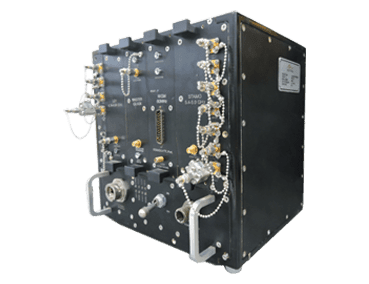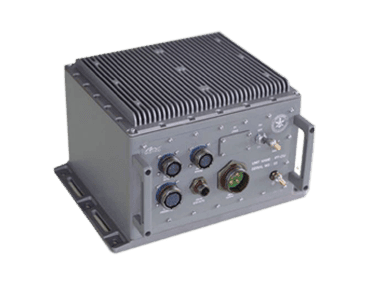
C-Band Synthesizer
Designed to provide all oscillator requirements for C-Band RADAR system using DDS techniques. With the power supply modules built into the system, the entire box is self contained with connector for 28V input power connector.

Overview
The C-Band Synthesizer from Mistral is designed using DDS (Direct Digital Synthesis) techniques that provide all the oscillator requirements for C-Band RADAR systems. The reconfigurability is built into the system through an FPGA-based digital waveform generator to further manipulate the registers of the onboard DDS and generate various spot frequencies. While the basic oscillator outputs are the STAMO, COHO, LO1, and LO2, multiple of these outputs are drawn for internal usage and also for monitoring.
The C-Band Synthesizer system is supported by an FPGA-based digital waveform generator, capable of generating Radar waveforms at the IF level. By incorporating power supply modules directly into the system, the enclosure becomes fully self-contained, equipped with a 28V input power connector for enhanced and streamlined functionality. The system features a sturdy rack-mounted design, ensuring dependable performance even in demanding environmental conditions. The C-Band Synthesizer undergoes environmental and EMI/EMC testing in accordance with CEMILAC guidelines for ground-based radar systems.
TECHNICAL SPECIFICATIONS
- Xilinx Virtex-5 FPGA based Digital waveform generator capable of generating Radar waveforms at IF level
- AM3517 Sitara ARM cortex-A8 processor module interfaced with a 10/100Ethernet – PHY device for Ethernet communication to a Host PC
- 16-bit one GSPS DAC for converting digital waveform into analog waveform
- Oscillitator outputs supported:
- STAMO (5.4 to 5.9 GHz), LO2 (4.14 to 4.59 GHz), LO1 (1200 MHz), DDS Module Clock (50 MHZ),
- Transmit Waveform, Master Clock (50 MHz),
- Wave Form Generator Module (60 MHZ LFM), COHO (60 MHZ)
- Waveform generator card interfaced to processor module over a GPMC interface
- DDR-waveform memory interfaced to the FPGA
- 28V input power connector





